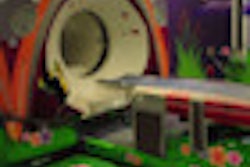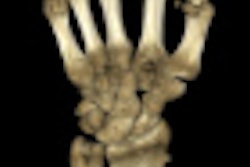Monday, November 29 | 3:20 p.m.-3:30 p.m. | SSE17-03 | Room N229
In patients presenting with aneurysmal subarachnoid hemorrhage (aSAH), whole-brain CT perfusion (CTP) and CT angiography (CTA) provide baseline perfusion parameters for future comparison when CTA is performed for evaluating a suspected ruptured aneurysm, researchers will report in this Monday session.Using this information, the Canadian study group was able to perform serial comparisons of CTA and CTP values for similar corresponding brain areas when patients are suspected of developing vasospasm. The results may improve management of aSAH patients.
"In many centers in Canada, patients presenting with aSAH undergo CTA initially to confirm an aneurysm as the cause of the bleed," said Cheemun Lum, MD, from the University of Ottawa. Lum and colleagues have begun using the expanded capabilities of whole-brain CT scanners to obtain baseline CT perfusion values at the same time CTA images are acquired. When CTA and CTP values are compared to corresponding brain areas, physicians can determine if changes in perfusion values have occurred, Lum said.
The study aimed to determine if there is a relationship between arterial diameter and perfusion in aSAH patients and to investigate if intra-arterial therapy in symptomatic vasospasm (VS) results in improved perfusion (+CBF [cerebral blood flow], -MTT/TTP [mean transit time/time to peak]). Sixteen aSAH patients (including six treated with intra-arterial milrinone) underwent admission and follow-up whole-brain CTA/CTP using a single contrast bolus.
Regions of interest were used to measure CBF, cerebral blood volume (CBV), MTT, and TTP at both baseline and follow-up within 14 days. The team compared parameters in patients with symptomatic VS at baseline, the start of VS, and postintra-arterial therapy, measuring the medial cerebral artery, anterior cerebral artery, and posterior cerebral artery from the corresponding CTA images.
In patients with aSAH, arterial narrowing was associated with decreased perfusion (MTT/TTP) compared to baseline, the researchers found, and those changes were correlated with arterial diameter. They also measured a treatment response, but say a larger study is needed to determine the most appropriate perfusion parameters.
"Comparing to admission perfusion allows physicians to determine if changes in perfusion values have occurred," Lum said. "We hope this technique will be helpful to guide vasospasm therapy when patients are comatose or confused, a situation where clinical examination is unreliable."




















